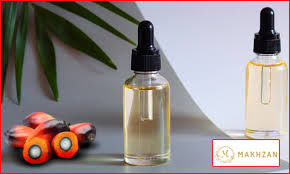For a long time, palm oil has been a quiet player in the cosmetics world. It’s favored for being flexible, affordable, and great for your skin. You’ll find it in many beauty products, from lipsticks to lotions. But behind the scenes, there’s a troubling story about environmental harm and ethical issues that can affect your health.
Nowadays, people are starting to pay more attention to what goes into their cosmetics. As buyers want more honest information, it’s important to talk about why palm oil is under scrutiny and what clean beauty alternatives are out there.
Why Is Palm Oil Everywhere in Beauty Products?
Palm oil and its byproducts make their way into about 70% of cosmetics. Some of the reasons they’re used include:
- It provides thatsilky, smooth feel
- Has a longer shelf life
- Has natural mixing properties that help oil and water-based ingredients to blend
But all these perks come with serious drawbacks.
The Environmental and Ethical Issues
It is said that the palm oil industry is a big cause of:
- Deforestation is because huge areas of rainforests are cut down for palm farms, which harms biodiversity.
- Wildlife Loss because animals like orangutans and Sumatran tigers face extinction.
- Human Rights Problems as there are frequent reports of labor abuse, including child labor and unsafe conditions.
Even sustainable palm oil certifications have come under fire for not doing enough to ensure real sustainability.
A New Concern: Harmful Chemicals
Aside from all that, recently, studies have pointed out another problem: palm oil products can contain harmful chemicals, like 3-MCPD and glycidyl esters, which are allegedly linked to kidney issues and cancer. Most of the research and studies have primarily focused on food products, but this raises questions for cosmetics too, since these products can be absorbed through the skin or swallowed.
How to Spot Palm Oil in Beauty Products
Palm oil often hides behind tricky ingredient names such as:
- Glyceryl Stearate
- Cetyl Palmitate
- Sodium Laureth Sulfate
- Stearic Acid
- Elaeis Guineensis Oil
Being able to read labels is crucial for those looking for truly clean options.
Clean Alternatives to Palm Oil
The good news is that there are now many sustainable beauty products out there. Brands focused on ethical sourcing are using natural butters and oils that work well and are good for the environment.
Some great palm-free substitutes include:
- Babassu Oil: which comes from Brazil and feels just as light as palm oil without harming nature.
- Shorea Robusta Butter: which is from the Sal tree, this rich butter is great for hydration in body creams.
- Kokum Butter: which is packed with good stuff like stearic acid, it’s smooth and doesn’t contribute to deforestation.
- Mango Seed Butter: which isfull of essential fatty acids and now becoming more popular in moisturizers and hair products.
People looking for natural skincare that respects both their bodies and the Earth now have more options every day.
The Future of Palm-Free Beauty
Awareness is just the start. The next step is for consumers to demand palm-free and ethically sourced products, which will push brands to change.
New independent certifications, like the Palm Oil Free Certification Trademark (POFCAP), are beginning to make it easier for shoppers to find clean beauty options. These provide better assurance than older, sometimes questionable, claims.
Take Away
The move towards eco-friendly beauty isn’t just a phase, it’s a real change. Choosing palm oil-free products is a meaningful way to support biodiversity, fair labor, and your health with every purchase.

